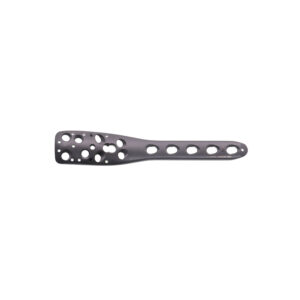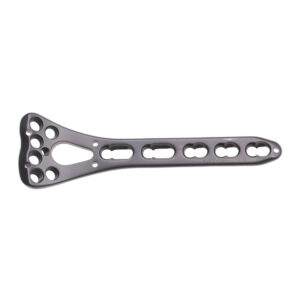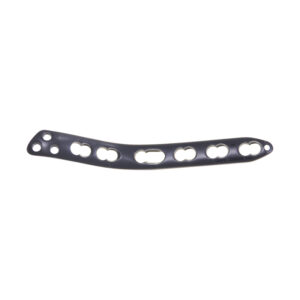描述
LCP Olecranon Plate
问&一个
Q1: What is a LCP Olecranon Plate and what are its primary indications?
A1: The LCP Olecranon Plate is a specialized pre-contoured locking plate designed specifically for fractures of the olecranon. Its primary indications include complex olecranon fractures, comminuted intra-articular fractures, osteoporotic fractures, and nonunions requiring stable fixation.
Q2: How does the anatomical contouring benefit surgical outcomes?
A2: The plate’s pre-contoured design matches the complex 3D anatomy of the proximal ulna, providing:
Optimal fit along the olecranon and dorsal ulnar shaft
Reduced need for intraoperative plate bending
Better support for articular fragments
Minimal hardware prominence and soft tissue irritation
第三季度: Can the Olecranon Locking Plate be used for both left and right sides?
A3: No, it usually comes in left and right versions to fit the anatomical contour of each side precisely.
第四季度: What surgical approaches are commonly used for LCP Olecranon Plate fixation?
A4: The posterior approach to the elbow is most commonly used to expose the olecranon and proximal ulna for plate application.
Q5: Are there different sizes of Proximal Ulna Plates available?
A5: 是的, they come in various lengths and hole configurations (例如, 3-hole to 10-hole) to accommodate different fracture patterns.
Q6: What is the recommended postoperative rehabilitation protocol?
A6: Standard protocol involves:
Early active motion (within first week post-op)
Gradual progression to passive stretching
Strength training initiated after radiographic evidence of healing
Full activity typically resumed by 3-4 月份
Q7: What are the key radiographic parameters for assessing reduction quality?
A7: Critical parameters include:
Anatomic reduction of the articular surface
Restoration of the trochlear notch anatomy
Proper plate position without joint penetration
Maintenance of the normal elbow joint alignment




